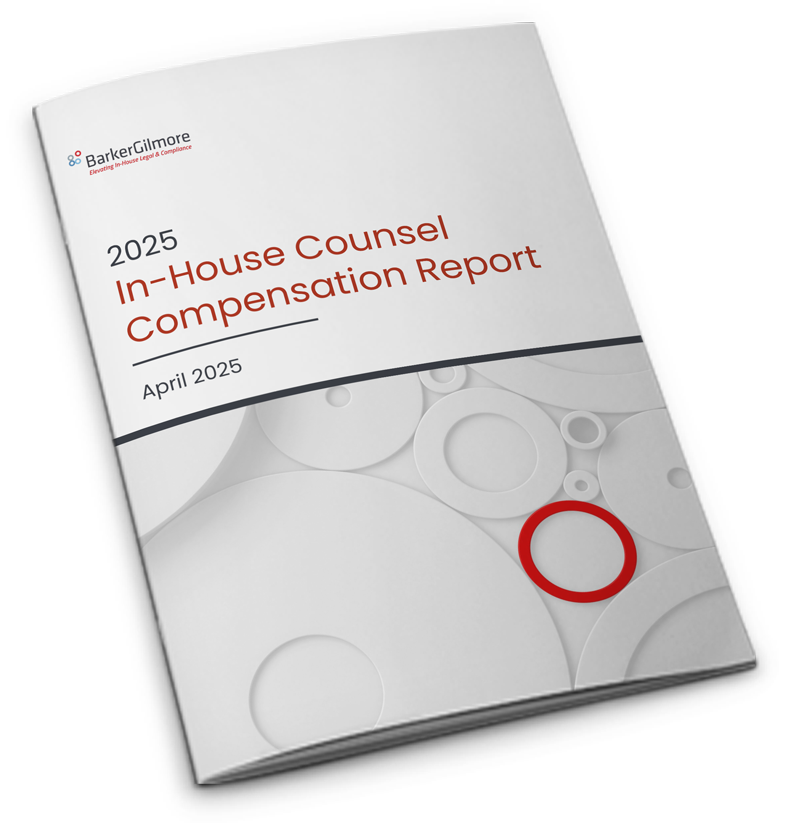A Guide for Onboarding Legal Executives
In a recent BarkerGilmore GC Advantage℠ webinar, “Creating an Effective Onboarding Plan for a Senior Legal Leader,” experienced General Counsel Cherée Johnson and I shared our insights about onboarding and best practices for creating and leveraging onboarding plans. Our advice is based on each of our own onboarding experiences as well as my experience coaching and Cherée’s experience managing others through their first years in a new senior legal or compliance leadership role.
A change in senior legal leadership, whether through external hire or internal promotion, presents both opportunities and challenges for even the best-run companies. From the company’s perspective, the transition, if handled poorly, can create turmoil. If handled well, however, a change in legal leadership can provide positive direction, increase efficiency, and improve performance.
From a new legal leader’s perspective, transitioning to the top can be overwhelming. It can take months to meet and build relationships with key internal clients, become familiar with the culture of the C-suite and Board of Directors, learn or dive deeper into the business and industry and the company’s strategies and finances, and assess and evolve the legal department. This can be a challenge for even the most capable lawyer-leaders.
What Is an Onboarding Plan?
Most companies facilitate leadership transitions through a process referred to as “onboarding,” a term we believe is derived from the concept of stepping on board a vehicle to move forward. A comprehensive, well-structured onboarding plan helps a new leader move along to assimilate and become productive more quickly with little disruption.
The scope and duration of an onboarding plan will depend on the company, its business, and the role of the person being onboarded. In a small company, onboarding may be as minimal as a few days of employee orientation or transition activities. In a large company, onboarding can take 3-6 months, even as long as a year. Either way, an onboarding plan should be a roadmap that includes key information, resources, relationships, and actions for a new leader to take within a timeline that the new leader and their manager align on with desired outcomes specified.
Ideally, creating an onboarding plan is more than making a to-do list; it’s a strategic and collaborative process among the new hire or new promotion, their manager, and an HR representative. Additionally, an executive coach can help develop a framework for integration that brings together the expectations of the company with the strengths that the new leader brings to the role. If onboarding a new Chief Legal or Compliance Officer, the CEO should be involved in the process to help facilitate introductions and establish priorities.
Executive Onboarding Best Practices
An effective onboarding plan will equip a senior lawyer for success in the new role and should include the following features in addition to reading materials:
- Introductions (meeting as many colleagues as possible will help new senior executives fit in socially as well as professionally)
- Trainings (education programs or immersive experiences, such as shadowing a manager, will help senior leaders learn unfamiliar aspects of their new role and how decisions are made at their new level)
- Events (both internal and external events can facilitate creating a professional brand for the leader and building a network of relationships)
- Tours and trips (senior leaders will benefit from meeting business partners and seeing the company’s operations across geographies)
- Check-ins (regular meetings to review milestones will allow key stakeholders and the new leader to know if the transition is being accomplished effectively)
Although introductions and meetings are necessary and important, don’t rely on meetings alone as the only way for new legal leaders to get to know stakeholders. Shadowing a business leader or attending a trade show with a sales team can be an effective way to develop stronger relationships.
In addition to standard company information, such as customer lists and sales data, a robust onboarding plan for a senior legal or compliance leader will include onboarding materials typically shared with new company board members, such as risk assessments and shareholder lists.
Implementing an Executive Onboarding Program
Seamless integration requires determining priorities. Different stakeholders will believe that certain issues should take precedence over others. The best way to resolve competing interests is to sit down with the CEO and the CHRO early on to find out what company leadership believes to be critical, such as evolving company culture, focusing on board relationships, or supervising specific litigation. The CEO and the CHRO can direct the new leader’s attention to pressing issues that require immediate resolution.
On the other hand, a new leader should avoid focusing on certain issues to the neglect of others. For example, when starting a role, a leader may be expected to reorganize a team, but individual relationships with business partners can be overlooked if reorganization is overemphasized. Balancing priorities is a fundamental part of a new leader’s role.
Once priorities are determined, the new leader will need to implement them. Time management is crucial. Blocking the leader’s calendar for a substantial time period, such as on Monday mornings or Friday afternoons, creates the opportunity to determine a course of action for a week as well as process lessons learned from a week. Best-in-class onboarding plans will encourage a new leader to build in time to think and to recharge in addition to completing a checklist of onboarding activities.
During the transition, questions will inevitably come up; new leaders should make a list of questions (e.g., what do new acronyms or financial terms mean?), find out whom to ask, then contact those people and get the answers. Senior leaders who are onboarding new or newly promoted lawyers should create regular opportunities for them to ask questions and should make clear to them how success will be measured.
Finally, new leaders should ask for feedback on their onboarding progress early and often. Frequent feedback will enable a new leader to adjust their onboarding plans as needed and ensure expectations of relevant stakeholders, including the CEO, are being met.
Our team of professionals are happy to help accelerate the initiatives that you’re already pursuing or to supplement your current strategic thinking to help you realize your vision. Please reach out if you or your organization may benefit from our recruiting, leadership development and coaching, or legal and compliance department consulting services. Let BarkerGilmore help you build and optimize your legal and compliance departments.
Connect with a legal recruiting advisor
* indicates required fields




